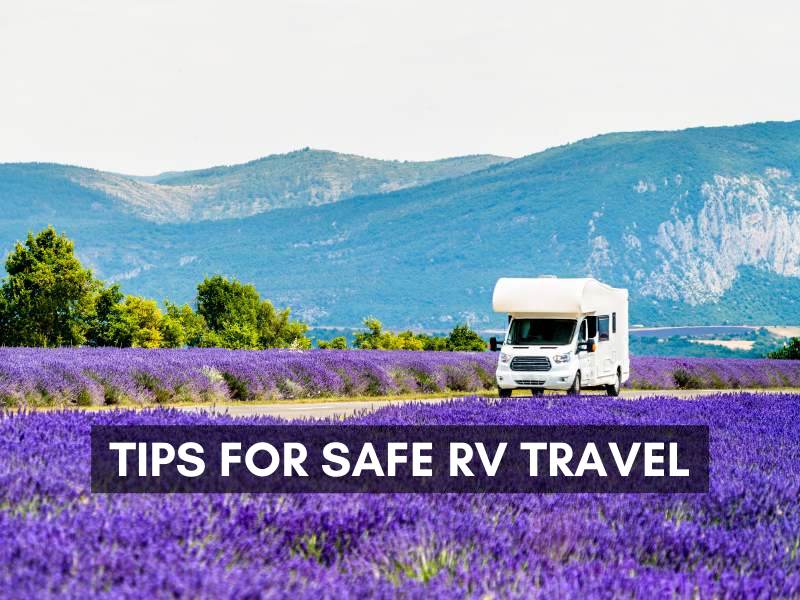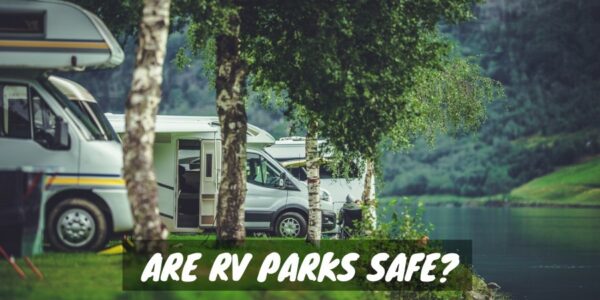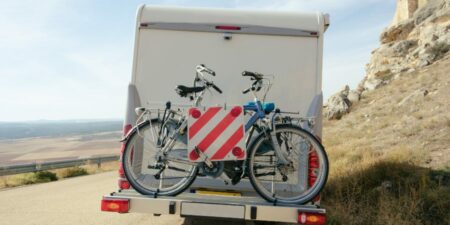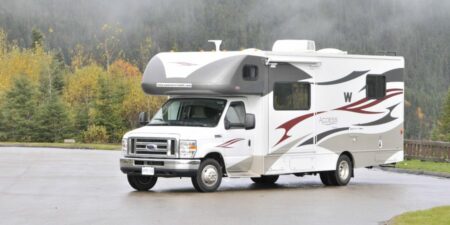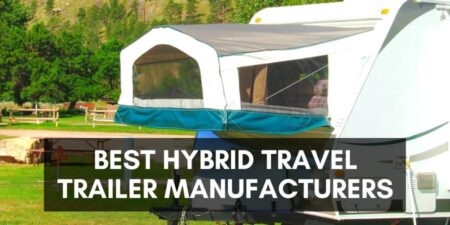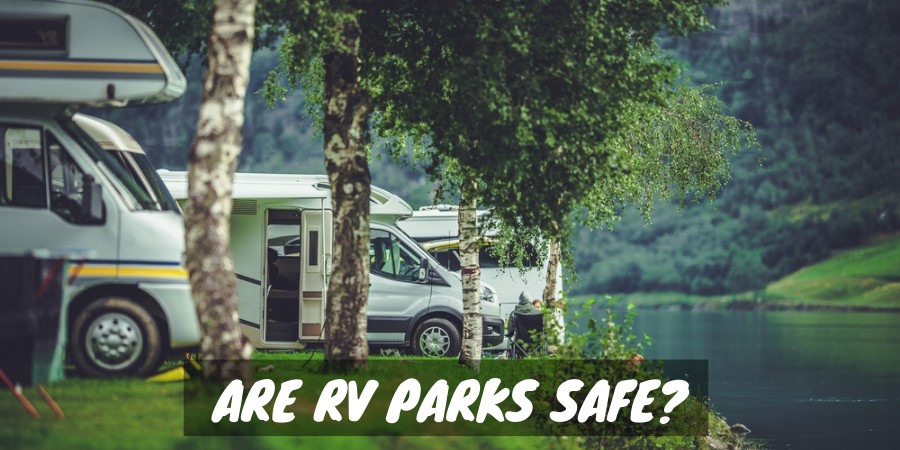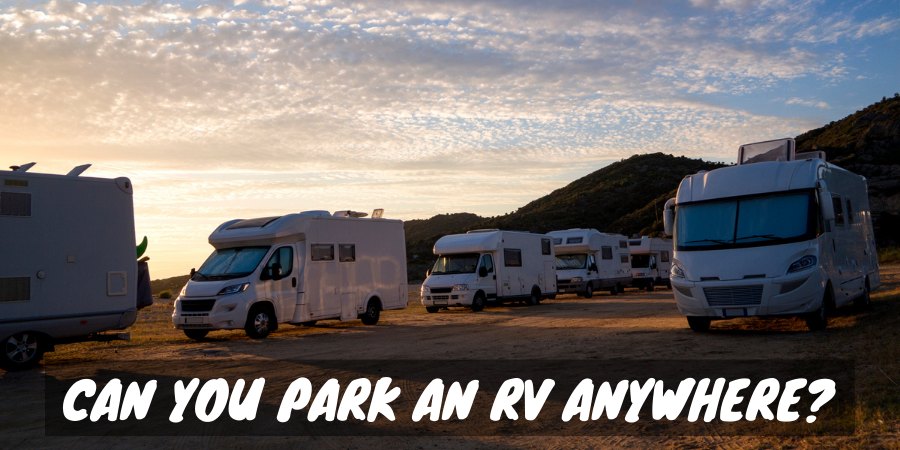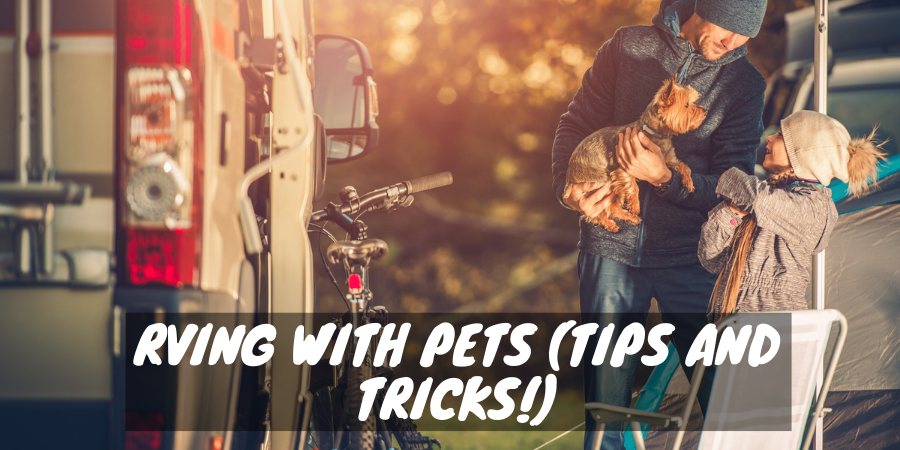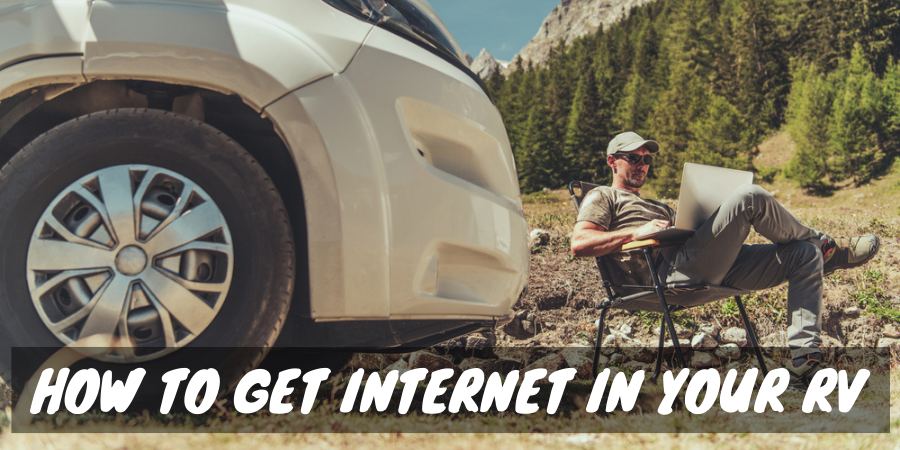RV travel season is kicking into high gear, and preparing for safe road trips is the first step to family fun.
Visiting RV parks and state and national campgrounds will be more enjoyable when you follow the list below that highlights the top ten tips for safe RV travel.
A little planning and proper packing go a long way to ensure everyone has the best RV vacation experience, so get your motorhome, fifth wheel, campervan, pop-up, or travel trailer out of storage and start getting ready for your next adventure!
Top 10 Tips for Safe RV Travel
1. Ensure RV is in Good Working Order
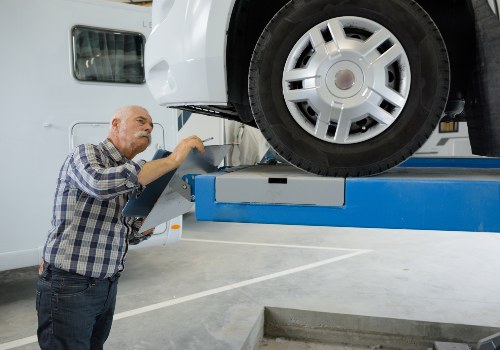
A recreational vehicle that breaks down during your journey is never safe.
Always invest time and money at the beginning of each camping season to inspect all RV electrical, plumbing, appliances, fire extinguishers, and smoke and CO alarms to ensure they are in good working order. Repair or replace malfunctioning items before they become a bigger problem once you hit the road.
Take your Class A, Class C, or Class B motorhome or campervan in for a tune-up and inspection.
If you own a fifth-wheel camper or travel trailer, ensure your tow vehicle is rated to pull your trailer safely and that it passes a mechanical check-up and all fluids are full. In addition, do a safety check on wiring harnesses and lights and ensure the jacks and stabilizers are operating smoothly.
2. Practice Driving or Towing the RV
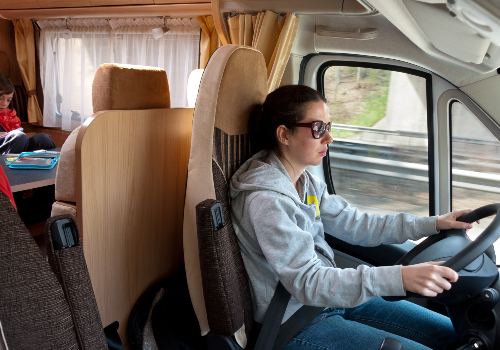
Novice RV owners should take an RV driving course or practice independently. Experience behind the wheel will help prevent accidents on the highway, at campgrounds, at gas stations, or in parking lots.
I suggest taking part in a course if possible. Companies like the RV Driving School offer locations across the US that allow you to learn to drive in your recreational vehicle.
Instructors’ hands-on experience and immediate tips are priceless in learning how to maneuver safely through all types of scenarios you’ll encounter on RV trips.
If taking a course isn’t possible, it’s best to find an empty parking lot to practice driving your motorhome or pulling your trailer. Set up some traffic cones or other “safe to hit” objects to learn about turning clearance, how to back up, and what you can and cannot see from your mirrors.
Remember that campgrounds and gas stations are full of obstacles that you won’t find in an open parking lot. The best advice is to try to recreate such obstacles by setting up a wooden ladder or two, so you can test and perfect your RV driving and parking skills.
Now is also the time to measure your camper’s full height and length, including roof-mounted items like the air conditioner or rear-mounted items like a bike rack.
These measurements are critical, so you’ll know how much clearance you need for tunnels, overhangs, tight turns, trees, or any other road feature or obstacle between you and your final destination.
Performing these driving tasks will also help you decide if you should consider installing an RV backup and side camera system to make driving and parking easier and safer.
3. Create a Checklist for Arrival and Departure

I don’t care how many years of RVing experience you have. It only takes one slip-up during the campsite arrival or departure sequence to cause minor to serious damage to your RV or injury to persons.
It’s critical to have a checklist to follow for setting up your RV upon arrival at a campsite and one that you can mark off as you complete the tasks when departing a campground.
You can find excellent RV arrival and departure checklist downloads online, and then tweak them to fit your specific needs.
I have my checklists laminated into one sheet (one side is for arrival, the other side is departure) and ready to go in my motorhome glove box. I use a dry erase marker to check off items and wipe the list clean before putting it away for next time.
I can’t express how easily you can get distracted while setting up or tearing down camp. Common issues are kids or pets running about, campground neighbors chatting you up, or being in a time crunch and rushing to finish.
Any distraction can lead to disaster if you forget to secure your hitch, unhook from the utilities, raise your steps, or other safety concerns. Take time to create your list, and alter it until it fits your RV requirements perfectly.
Always follow each step on the list to ensure you don’t miss a thing, and then double-check that each task is complete. Don’t assume a traveling partner took care of certain checklist items. Instead, do a final walk-around and visually inspect that all is well before enjoying your new camping location or leaving at the end of your trip.
4. Research Campgrounds and Local Attractions
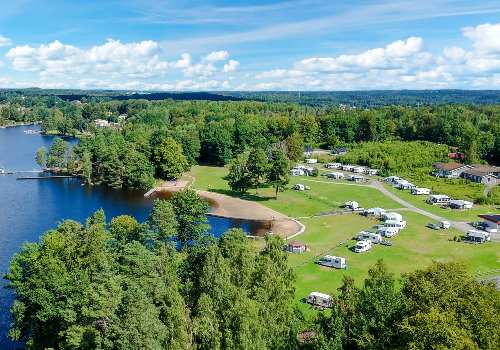
I wish I could say that all campgrounds and RV parks are safe to visit. Unfortunately, certain areas of the country or certain areas of a town are not as safe for travelers as others.
Once a safe, family-friendly destination, some places could now be attractive to criminals looking to steal from tourists who have their guard down.
The only way to combat taking your family ad RV into a dangerous situation is to research the campgrounds and attractions you plan to visit. Always search for the most current news and reviews to get a feel about safety levels at each location to avoid places with a sketchy reputation.
Call RV parks you don’t know about and ask about long-term guests versus seasonal snowbirds or tourists. You will encounter RV parks full of “resident” guests who may or may not be upstanding citizens and cause issues.
What issues am I referring to? Well, long-term guests at RV parks can get very territorial. They get angry if you’re making too much noise, even within quiet hours rules, because THEY have to get to sleep early for work the next day and can get aggressive.
Others may leave pets out unattended or even loose, and some campgrounds don’t care if long-termers have a couch, fridge, or broken-down car outside that can ruin the appeal of your camping experience or even be dangerous.
With the abundance of online RV forums and campground reviews available, you should quickly see if the place you want to book is a traditional campground or more of a local-resident-style of RV park.
5. Maintain RV Tires
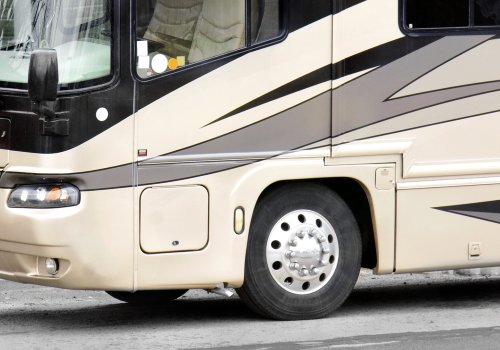
Maintaining RV tires is such a critical part of safe RV travel that it needs its own section.
The majority of RV accidents involve tire issues such as:
- Blowouts
- Low tire pressure
- Overloading tire ratings
- Tires past their lifespan for age or miles
Since everything you love or need is riding on the tires of your recreational vehicle, you’ll want to ensure your belongings, family members, and guests all arrive safely to and from your camping destination.
While I recommend installing a tire pressure monitoring system (TPMS) on your RV for extra peace of mind, you can save money by inspecting your tires often to catch problems before they lead to a blowout.
No products found.
Check the tire pressure before and during all RV trips, and immediately top off any low PSI. It doesn’t take long for an underinflated tire to create extra friction and heat, leading to a blowout.
It’s smart to learn how to check the age of your RV tires. This task is essential if you recently purchased a used camper.
If you didn’t buy your RV tires new and know their exact age and lifespan, you’ll need to look up the codes on the sidewall and find the information yourself.
Visually, a tire with crazing or cracks on the sidewall rubber or shallow treads indicates that new tires are in order. Likewise, any odd bulging of the sidewalls or uneven wear on the treads is another sign tires need replacement.
However, no matter how good your RV tires appear, you must install new ones once they hit their expected lifespan. Rubber degrades over time, and that perfectly good-looking tire can blow and put you and others in danger.
6. Don’t Overload Your Camper
Another key to safe RV travel is to know the load rating for your tires so you don’t stress them past their limits. RV owner’s manuals should tell you which size and type of tire to install to handle the camper’s weight and load strain.
Please note that even if you have the right tires, the RV manufacturer recommends, if you load up your camper improperly, you’ll easily overload one or two tires and increase the chances of a blowout.
You always want to distribute the weight of camping supplies throughout your RV evenly. For example, you may need to load some canned food into your bedroom closet or store some clothes under the dinette in the kitchen.
A great tip for new RVers is to form a pile of all the items going into your camper. Then, weigh everything on a scale to make sure you aren’t going over the RV’s cargo capacity rating, and then try to store items so both the side-to-side and front-to-back weight totals are as even as possible on each tire.
As a final safety step, you can drive your loaded RV to the scales at a truck stop or weigh station to see the actual weight (it shouldn’t be over your RV’s GVWR) and how much pressure is on each tire. Always perform this test with your usual occupants inside and full propane and storage tanks.
This check is the only way to ensure you aren’t overtaxing your tires or exceeding the gross vehicle weight rating, and it gives you a chance to readjust or remove some of the load to make it right.
7. Plan Your Route and Fuel Stops
Want to Connect With a Community of Over 1,078 RV Enthusiasts?
There are several reasons to plot your travel route and fuel stops to stay safe on RV trips.
The first is that you can leave your route with family or friends, so they can track your movements in case things go awry. Another reason to plan your path is to ensure your RV can traverse the roads that will take you to your campsite.
Low bridges or underpasses and skinny or gravel backroads can cause accidents and frustration you could avoid if you only checked that the route you are taking is safe for your size RV. You can find RV specific GPS systems that allow you to type in your camper’s dimensions and weight, and it will direct you to the safest path.
- Large 7” RV navigator offers a bright, high-resolution touchscreen to easily…
- Find the best roads for your RV with custom routing for the size and weight of…
- Access a preloaded directory of RV parks and services, Tripadvisor traveler…
- Enjoy BirdsEye Satellite Imagery, which shows vivid aerial views to help with…
- See road warnings to help keep you aware of steep grades, sharp curves, weight…
You’ll also want to check that your route doesn’t take you through high-crime areas, where RVs may draw unwanted attention.
Lastly, plot out your fuel stops. If you know you can travel 200 miles on a tank of gas, always plan to fill up when you hit around half a tank or so. If you don’t follow this rule, you may find a nearly empty tank and no gas station within 30 miles.
Getting stranded roadside waiting for assistance because you ran out of fuel puts everyone in danger. Keeping your RV gas tank as full as possible during travel days also helps you get through highway backups that could leave you idling and consuming fuel.
8. Carry Self Protection
It goes without saying that camping can put you in remote locations far from the aid of law enforcement or medical personnel.
Most RVers I know carry some self-defense equipment such as a firearm, taser, knife, or pepper spray. Legal or not, having a way to defend yourself from intruders or even wild animals during RV trips is vital to staying safe.
Figure out what level of comfort you have using each type of self-defense equipment, and choose the ones that work well for you, especially if you need to use them quickly.
If people creeping around your RV at night is a concern, install security cameras that activate with motion and wake you up. Those few extra seconds of being aware of trouble will give you a chance to grab your weapon, formulate a plan, or call 911.
- Outdoor 4 is our fourth generation wire-free smart security camera that helps…
- See and speak from the Blink app — Experience 1080p HD live view, infrared…
- Two-year battery life — Set up yourself in minutes and get up to two years of…
- Enhanced motion detection — Be alerted to motion faster from your smartphone…
- Person detection — Get alerts when a person is detected with embedded computer…
The best tip for a safe stay no matter where you roam is to trust your instincts. If something just doesn’t feel right about where you stop for the night, keep moving, even if you need to forfeit your deposit.
I’ve only had to leave one RV park in my decade of full-time RV life, but I’ve left countless boondock sites in remote areas and at Walmart or other retail parking lots. Yes, it’s a hassle after a long day of travel, but worth feeling safe and getting a night of restful sleep.
9. Create an Emergency Kit
- 【Always Safe on the Road】 To help you deal with most possible accidents, we…
- 【Multipurpose Roadside Assistance】 It’s a great kit for most auto…
- 【Easy-to-Carry】 This auto emergency kit comes in a small bag that fits…
- 【A Wonderful Gift】 As a useful and necessary kit, it’s an amazing gift for…
- 【Safety Guarantee】 Every single accessory in this emergency kit is safe and…
Another key element to staying safe while RVing is to have an emergency kit full of essential items. These include products like extra medication, first-aid items, elastic bandages, fire-starters, ready-to-eat meals, and even a small propane heater and cooker to help with minor injuries or to handle unexpected power outages while camping. You can tuck a small tote full of essential items in a storage bay or under the bed so it’s out of the way but easy to grab if necessary.
10. Practice RV Bad Weather Routine
Sudden severe storms are part of the RV experience but terrifying nonetheless. If you don’t plan for such situations, you may find your awning ripped from your camper, or even worse, your entire fifth wheel or travel trailer flipped on its side.
Staying on top of weather conditions is part of a smart RV safety plan. Still, it would help if you also created a quick-action plan to pack up outdoor camping equipment, put away that awning, and possibly even move your RV into a better position to withstand the wind or get out from under trees.
If your RV has a manual awning, trying to lower it and put it away during a downpour with high winds and lighting is scary and nearly impossible. I’ve had my awning ripped a couple of times by storms that hit when I wasn’t paying attention to the weather.
I’ve seen plenty of other campground guests who didn’t prepare for bad weather come outside to find their awning flipped onto the camper roof and their chairs and tables a mangled mess.
It would be best if you practiced seeing how fast you can close and secure your RV awning and store your outdoor camping equipment. Of course, having a partner to help with this task is ideal, but you’ll be surprised how quickly you can secure your RV’s outdoor items when you’ve mastered a plan.
For weather events that include severe winds, try to move your RV so it’s parallel to the wind to lessen the chance of your camper tipping over.
Final Thoughts
RV travel safety takes on many forms, but all work together to protect you, your camper, your belongings, and your family so you can focus on making incredible vacation memories.
Follow the guide above to be ready this travel season so that you can enjoy safe and stress-free RV trips!
"Man cannot discover new oceans unless he has the courage to lose sight of the shore."
-- Andre Gide

